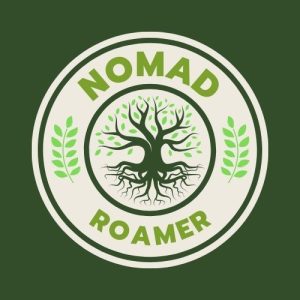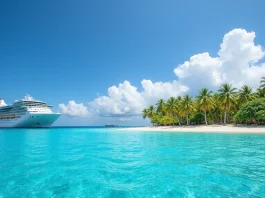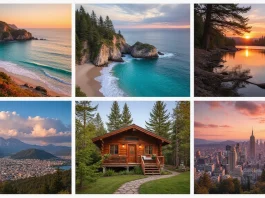Exploring Caribbean Wildlife Sanctuaries
The Caribbean is not only a paradise for sun-seekers but also a haven for wildlife enthusiasts. Nestled amidst its lush landscapes are numerous wildlife sanctuaries that offer a chance to see exotic animals in their natural habitats. These sanctuaries are a testament to the region’s commitment to conservation and biodiversity. Let’s embark on a journey through some of the Caribbean’s most stunning wildlife sanctuaries and discover the marvelous creatures that call these places home.
Dominica’s Cabrits National Park: A Nature Lover’s Paradise
Located on the northern tip of the island of Dominica, Cabrits National Park is a stunning testament to the island’s natural beauty and rich biodiversity.
A Diverse Ecosystem
Cabrits National Park is home to a complex ecosystem that includes dry forests, coral reefs, and coastal mangroves. These habitats support a diverse array of wildlife, making it a sanctuary for both terrestrial and marine species. Visitors can expect to encounter iguanas, parrots, and a variety of other birds flitting through the trees. The park's marine areas are equally impressive, offering sightings of colorful reef fishes and occasional sea turtles.
Conservation Efforts
The existence of Cabrits National Park is crucial in protecting the local environment from deforestation and unchecked development. Actively managed by conservationists, the park emphasizes ecotourism and educational programs to foster a deeper appreciation and understanding of the natural world.
Barbados Wildlife Reserve: Emblem of Conservation
Barbados, known for its warm hospitality and pristine beaches, also takes great pride in its commitment to wildlife conservation, as epitomized by the Barbados Wildlife Reserve.
Resident Monkeys and More
Among the most famous residents of the Barbados Wildlife Reserve are the green monkeys, a species that was introduced to the island in the 17th century. These charismatic primates roam freely within the reserve, providing visitors with up-close encounters. Additionally, the reserve hosts a variety of other animals, including iguanas, tortoises, and peacocks, each contributing to the region's biodiversity.
Engagement and Education
This sanctuary’s mission extends beyond mere preservation; it serves as a center for ecological education and public engagement. Through interactive tours and informative displays, the reserve fosters a deeper understanding of its resident species and the importance of protecting their natural habitats.
Jamaica’s Cockpit Country: Rich Biodiversity at Risk
Cockpit Country, Jamaica’s largest contiguous rainforest, is one of the most biologically rich areas in the Caribbean, offering an unparalleled glimpse into the island’s unique flora and fauna.
A Unique Geology
Characterized by its rugged terrain of limestone hills, caves, and sinkholes, Cockpit Country provides a unique environment for a plethora of plant and animal species. Among its endemic inhabitants are several species of birds, bats, and even the rare Jamaican boa.
Conservation Challenges
Despite its ecological significance, Cockpit Country faces threats from mining and development. Conservationists and local communities are actively working to secure protection for the area, highlighting the delicate balance between human activity and biodiversity conservation.
Puerto Rico’s El Yunque National Forest: Tropical Wonderland
As the only tropical rainforest within the United States National Forest System, El Yunque is a treasure trove of diverse habitats and wildlife.
Bountiful Birdlife
Birdwatching enthusiasts will find El Yunque to be a haven, with several endemic species, such as the Puerto Rican parrot, calling it home. The forest's lush canopy and vibrant understory provide ideal habitats for these avian residents to thrive.
Waterfalls and Wildlife
Visitors seeking a more immersive natural experience can explore the park’s numerous hiking trails, leading to stunning waterfalls and scenic vistas. Along the way, one might encounter the coquÃ, a tiny tree frog whose melodic song is symbolic of Puerto Rican wildlife.
Curaçao’s Christoffel National Park: A Desert Oasis
Curaçao's largest national park, Christoffel, offers a stark contrast to the tropical sanctuaries of other Caribbean islands, showcasing the island’s arid beauty.
Desert Wildlife
While primarily known for its dry forest and cactus-studded landscapes, Christoffel Park is home to an impressive array of wildlife. Visitors can observe the elusive white-tailed deer, the Curaçao island rabbit, and a variety of bird species unique to this part of the world.
Architecture and Animals
The park is also home to historic plantation buildings and ancient caves adorned with Amerindian petroglyphs, adding a cultural dimension to its natural wonders. This fusion of cultural heritage and biodiversity makes Christoffel National Park a fascinating destination for explorers.
The Bahamas’ Exuma Cays Land and Sea Park: Marine Marvels
The Exuma Cays Land and Sea Park, a protected marine area in The Bahamas, offers a brilliant showcase of marine biodiversity.
Underwater Spectacles
As one of the first marine protected areas in the Caribbean, this park is a haven for snorkeling and diving enthusiasts. The crystal-clear waters reveal thriving coral reefs and vibrant marine life, including nurse sharks, eagle rays, and a plethora of colorful fish species.
Conservation in Action
The park serves as an important research site and a living laboratory, where innovative conservation techniques are explored and implemented. Its success is evidenced by the rebounding population of marine species, showcasing the effectiveness of marine conservation initiatives.
Montserrat’s Plymouth’s Wildlife Refuge: A Symbol of Resilience
Following the dramatic volcanic eruptions that devastated large areas of Montserrat in the 1990s, the island has become a symbol of resilience and renewal, with wildlife sanctuaries playing a key role in its recovery.
Adapting to Change
The island’s wildlife refuges provide safe havens for many species that were impacted by the volcanic activity. Species such as the Montserrat oriole, a critically endangered bird, have found refuge within these protected areas.
Visitor Experiences
Though much of Montserrat is still an active volcanic zone, guided tours offer visitors a glimpse into the resilience of both nature and community in the face of natural disasters. These tours emphasize the importance of conservation as a means to preserve biodiversity amid environmental challenges.
Trinidad and Tobago’s Asa Wright Nature Centre: Avian Wonders
Nestled in the Arima Valley, the Asa Wright Nature Centre is renowned as one of the Caribbean’s premier birdwatching destinations.
A Birdwatcher’s Delight
The center boasts an impressive list of over 170 bird species, attracting ornithologists and nature lovers alike. Among its most celebrated residents are the beautiful hummingbirds and the elusive bird of paradise. The verandah at the centre offers unmatched views, making it an ideal spot for photographing rare and colorful avian species.
Education and Research
The Asa Wright Nature Centre is deeply committed to environmental education and research. It hosts programs aimed at fostering awareness and appreciation for Trinidad and Tobago’s unique ecosystems, inspiring a new generation of conservationists.
St. Lucia’s Maria Islands Nature Reserve: Home of the Rare
Just off the coast of St. Lucia lies the Maria Islands Nature Reserve, a sanctuary known for housing some of the Caribbean’s rarest reptile species.
Reptile Sanctuary
The reserve is home to the St. Lucia whiptail, one of the rarest lizards in the world. These islands provide a predator-free environment, crucial for the conservation efforts aimed at increasing the species’ numbers. Additionally, the reserve’s rocky terrain provides habitats for a range of other unique reptiles.
Visitor Regulations
Access to the islands is restricted, ensuring minimal human impact on the fragile ecosystems. Guided tours are available, offering structured and sustainable viewing opportunities while conveying the importance of protecting these rare species.
Cayman Islands’ Queen Elizabeth II Botanic Park: Blossoming Beauty
The Cayman Islands are home to a botanical wonderland that doubles as a sanctuary for rare plant and animal species, vital for research and conservation.
Floral Diversity
The park is renowned for its diverse collection of both native and exotic plants. Seasonal blooms create an ever-changing canvas of colors, attracting visitors year-round. A dedicated garden area preserves endemic species, reducing threats from development and climate change.
Fauna at the Gardens
Beyond its floral appeal, the park is a critical refuge for the endangered blue iguana. Efforts to increase their population have successfully made the Queen Elizabeth II Botanic Park a focal point for reptilian conservation. Visitors can see these majestic creatures up-close in an environment that mimics their natural habitat.
Grenada’s Grand Etang National Park: A Ringing Chorus of Nature
Set amidst a lush rainforest, Grand Etang National Park in Grenada is a vibrant ecosystem where exotic animals thrive alongside breathtaking landscapes.
An Evergreen Paradise
Visitors to Grand Etang National Park can explore a wide variety of landscapes, from verdant forests to mist-covered lakes. The park is renowned for its population of Mona monkeys, which are both a delight and a curiosity for guests. Birdlife here is abundant, with several species endemic to the region.
Community and Conservation
Efforts to protect Grand Etang’s unique environment involve collaboration with local communities. Educational programs and community involvement are pivotal in ensuring the park’s ecological integrity is maintained for future generations.
Haiti’s Macaya National Park: Confluence of Richness and Rarity
Located in the southern peninsula, Macaya National Park is a cornerstone of biodiversity in Haiti, featuring a myriad of ecosystems and unique species.
A Montane Refuge
The park encompasses diverse habitats from cloud forests to limestone formations, supporting numerous plant and animal species, some found nowhere else on earth. Highlights include the park’s amphibians, such as endemic frogs that are key indicators of environmental health.
An Ongoing Battle
Despite facing challenges from deforestation and agricultural encroachment, Macaya National Park continues to be a beacon of hope for conservationists. Active efforts are underway to bolster protection measures that will enhance habitat restoration and biodiversity conservation.
Conclusion: A Lasting Commitment to Conservation
The Caribbean’s wildlife sanctuaries serve as crucial custodians of biodiversity, providing refuge for a myriad of rare and exotic species. Through ongoing efforts in conservation, education, and sustainable tourism, these sanctuaries not only protect the region’s unique wildlife but also inspire a global audience to appreciate and preserve the natural world. By visiting these sanctuaries, travelers not only witness stunning ecosystems and wildlife but also contribute to the continued conservation and appreciation of these natural wonders.




